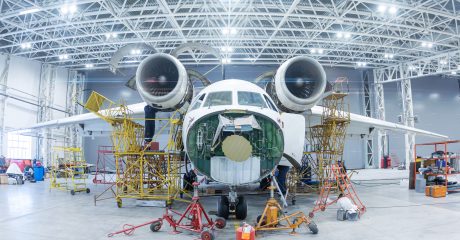In the ever-evolving world of aircraft manufacturing, precision and efficiency are paramount. One machining technique that has gained significant importance in recent years is Swiss screw machining. This advanced manufacturing process offers a range of benefits for producing high-quality aircraft components. In this article, we will delve into the world of aircraft Swiss screw machining, exploring its key features and applications.
Definition of Swiss Screw Machining
Swiss screw machining, also known as Swiss turning or Swiss-style turning, is a manufacturing process used to produce small, intricate, and precise components. It was initially developed for watchmaking in Switzerland and has since been adapted for various industries, including aerospace.
The main characteristic of Swiss screw machining is its ability to perform multiple operations simultaneously. Unlike traditional lathe machining, which requires sequential operations, Swiss machines have a sliding headstock and a guide bushing that provides support close to the cutting tool. This setup enables the machining of long, slender, and complex parts with high precision.
Comparison to Other Machining Techniques
In the aircraft industry, where safety and reliability are of utmost importance, choosing the right machining technique is critical. While there are several machining methods available, Swiss screw machining offers unique advantages over others.
Compared to traditional lathe machining, Swiss screw machining allows for faster operation. The simultaneous multi-axis capability of Swiss machines reduces wait times, resulting in improved efficiency and faster production cycles. Additionally, Swiss machines can achieve a superior surface finish, eliminating the need for additional grinding or finishing processes.
Another notable comparison is with CNC (Computer Numerical Control) machining. While CNC machines offer versatility and automation, Swiss screw machining excels in producing small, intricate components with tight tolerances. The integration of CNC technology in Swiss machines further enhances precision and reduces the risk of production errors.
Importance and Relevance of Swiss Screw Machining
The aerospace industry demands the utmost precision and reliability in its components. From fasteners and connectors to landing gear systems and avionics equipment, every part plays a crucial role in ensuring the safety and performance of an aircraft. Swiss screw machining, with its ability to produce intricate and high-precision components, has emerged as a vital technique in aircraft manufacturing.
By leveraging the capabilities of Swiss screw machining, manufacturers can achieve the required tolerances and surface finishes for critical aircraft parts. This precision leads to enhanced reliability, improved safety, and reduced maintenance requirements.
Applications of Aircraft Swiss Screw Machining
The versatility and precision of aircraft Swiss screw machining make it suitable for a wide range of applications in the aerospace industry. Let’s explore some of the key areas where this machining technique finds extensive use.
Fasteners, Connectors, and Electrical Contacts – These are integral components in aircraft systems. These parts require precise dimensions, high-quality surface finishes, and reliable performance. The simultaneous multi-axis capability allows for efficient production of threaded components, ensuring a perfect fit and reliable connections. Swiss screw machining also enables the production of intricate electrical contacts with tight tolerances, ensuring reliable conductivity and performance.
Landing Gear Systems and Avionics Equipment – Landing gear systems and avionics equipment are critical to the safe operation and functionality of an aircraft. Landing gear systems require components such as bushings, shafts, and fittings that can withstand high loads and provide smooth operation. Swiss screw machining, with its ability to produce high-precision, durable parts, meets the stringent requirements of landing gear systems. Additionally, swiss screw machining ensures the production of intricate parts with tight tolerances, contributing to the overall performance and functionality of avionics equipment.
Contact Custom Tool Today
To ensure the right wheel selection for carbide tool grinding, it is advisable to refer to the manufacturer’s recommendations and consult with industry experts like us! We can provide valuable insights and guidance to help you select the best wheel for your grinding needs.
If you have any questions or need assistance in choosing the right grinding wheel, please feel free to contact us. Our team of experts is here to help you make the best decision for your grinding applications.
